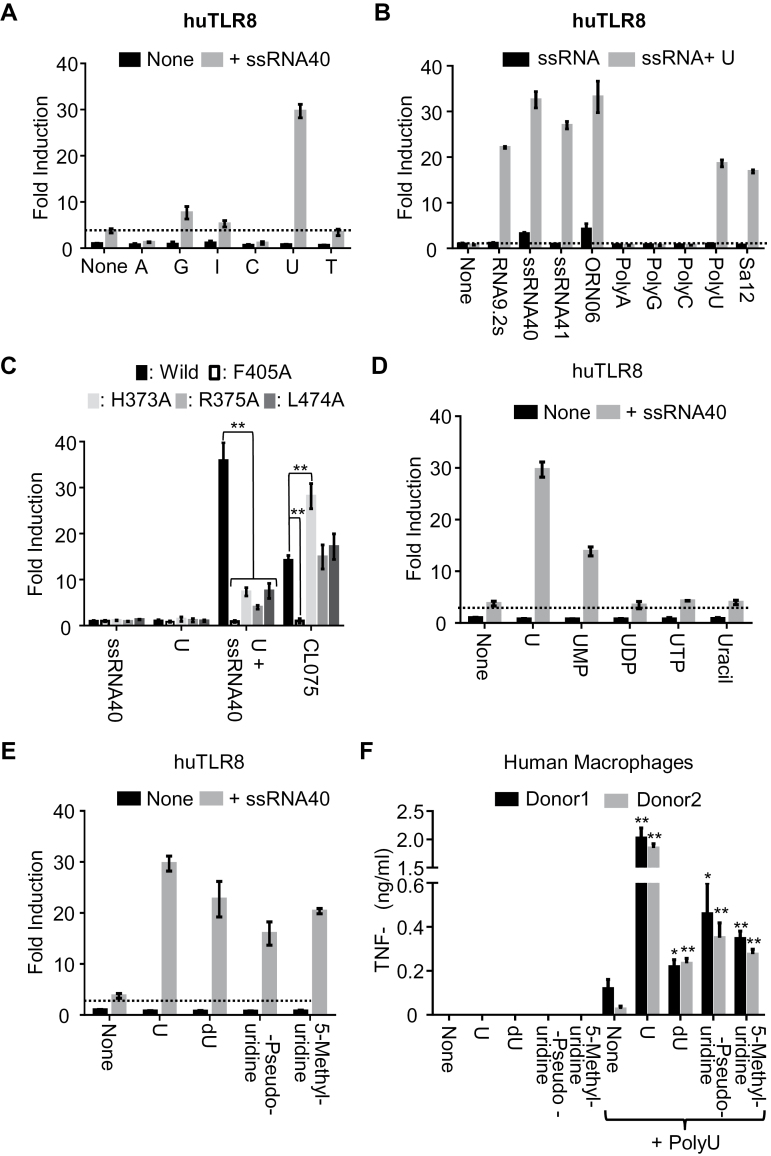Fig. 1.
Human TLR8 is synergistically activated by U analogs and ssRNA. Human TLR8 (huTLR8) response was analyzed by NF-κB-dependent luciferase reporter assay using HEK293T cells expressing huTLR8. Cells were stimulated with (A) a variety of 1mM nucleosides with or without 20 μg ml–1 ssRNA40; (B) a variety of 20 μg ml–1 ssRNA with or without 1mM U; (D) 1mM U, U nucleotides or uracil with or without 20 μg ml–1 ssRNA40; (E) 1mM U, deoxyuridine (dU), β-pseudouridine or 5-methyluridine with or without 20 μg ml–1 ssRNA40, in the presence of DOTAP. (C) The NF-κB activation by WT huTLR8, first-site mutants (F405A) and second-site mutants (H373A, R375A, L474A) of huTLR8 in response to 20 μg ml–1 ssRNA40, 1mM U, 1mM U + 20 μg ml–1 ssRNA40 or 5 μg ml–1 CL075 with DOTAP. Data represent the mean fold induction of NF-κB activity (n = 3, ±SD), calculated as the RLU of stimulated cells divided by the RLU of non-stimulated cells, and two-tailed Student’s t-test was used to evaluate the statistical significance between WT and mutant huTLR8 (**P < 0.01). (F) Human macrophages derived from two healthy donors were stimulated by indicated U derivatives in the presence or absence of ssRNA40 (20 μg ml–1) with DOTAP. TNF-α production was determined by ELISA. Two-tailed Student’s t-test was used to evaluate the statistical significance between polyU only and U derivatives with polyU (**P < 0.01; *P < 0.05). Data shown are representative of more than three independent experiments.

